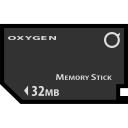Memory
Revision as of 17:13, 26 July 2018 by Freephile (talk | contribs) (Document some of the things I learned about Transparent HugePages)
Python, Linkers and Virtual Memory https://www.youtube.com/watch?v=twQKAoq2OPE
Reporting on "actual" memory usage of your application with smem http://linuxaria.com/pills/linux-terminal-check-who-uses-all-your-memory-with-smem
Transparent Hugepages[edit | edit source]
- https://access.redhat.com/solutions/46111 for Fedora and RHEL Note: their commands at the end of the article for determining if HugePages are disabled do not work in my limited tests. I have both Ubuntu and CentOS systems which are using HugePages, yet
grep -i HugePages_Total /proc/meminfocat /proc/sys/vm/nr_hugepagesandsysctl vm.nr_hugepagesall report zero. Meanwhilegrep AnonHugePages /proc/meminfoandgrep -e AnonHugePages /proc/*/smaps | awk '{ if($2>4) print $0} ' | awk -F "/" '{print $0; system("ps -fp " $3)} 'report actual usage. The biggest applications? mysqld, java, python, node, polkitd, mongod, httpd
Strangely, the value for cat /sys/kernel/mm/transparent_hugepage/enabled
[always] madvise never
Note that in order to enable or disable THP permanently (so that it survives reboots), you need to do more than just echo a value to /sys/kernel/mm/transparent_hugepage/enabled. And there are subtle differences between distros. [1]
